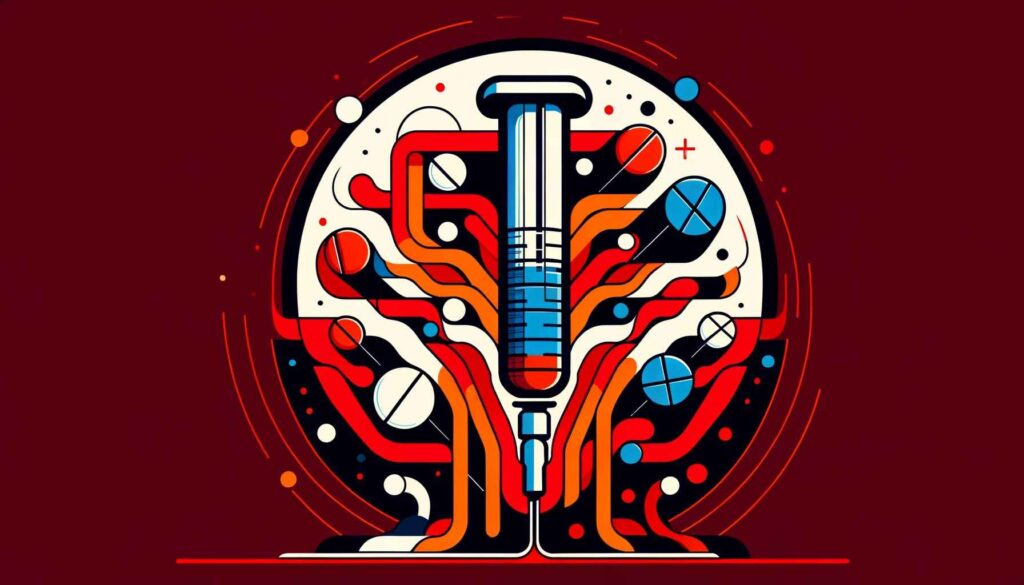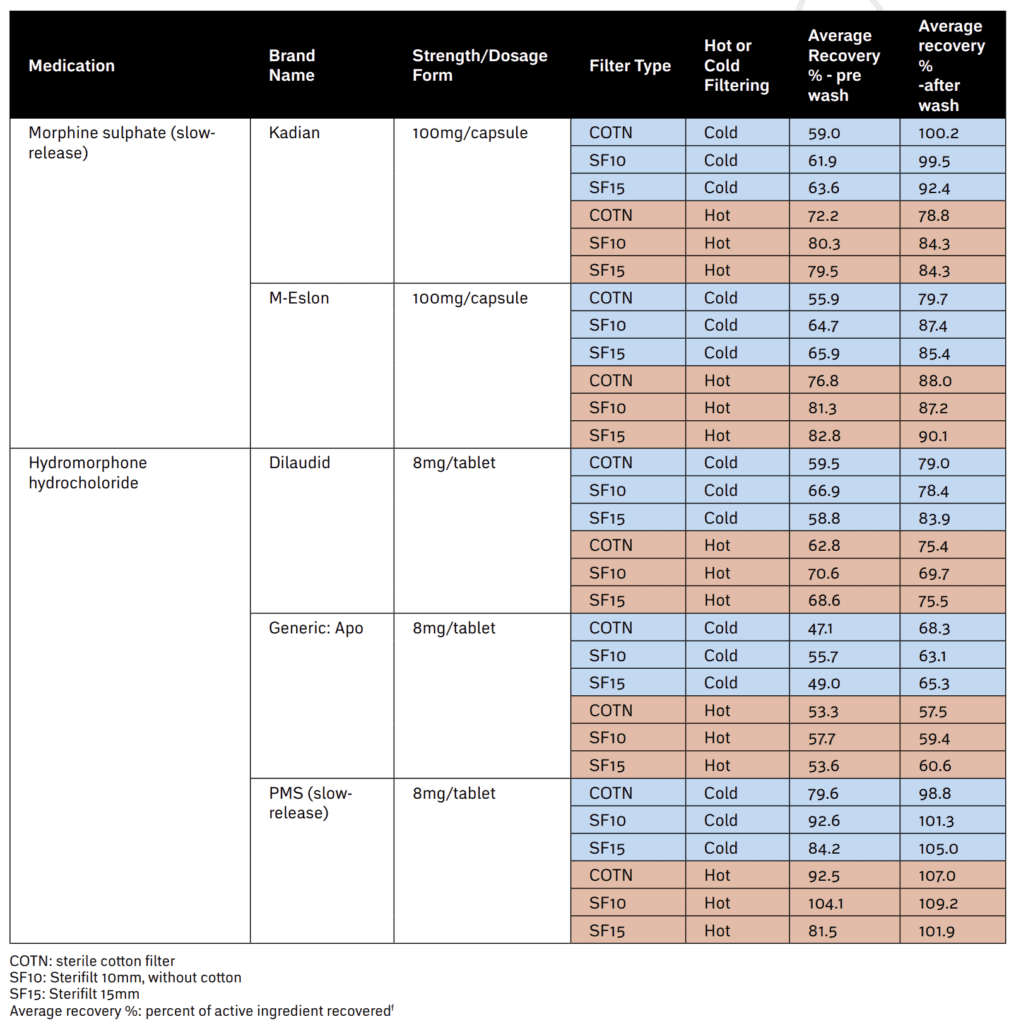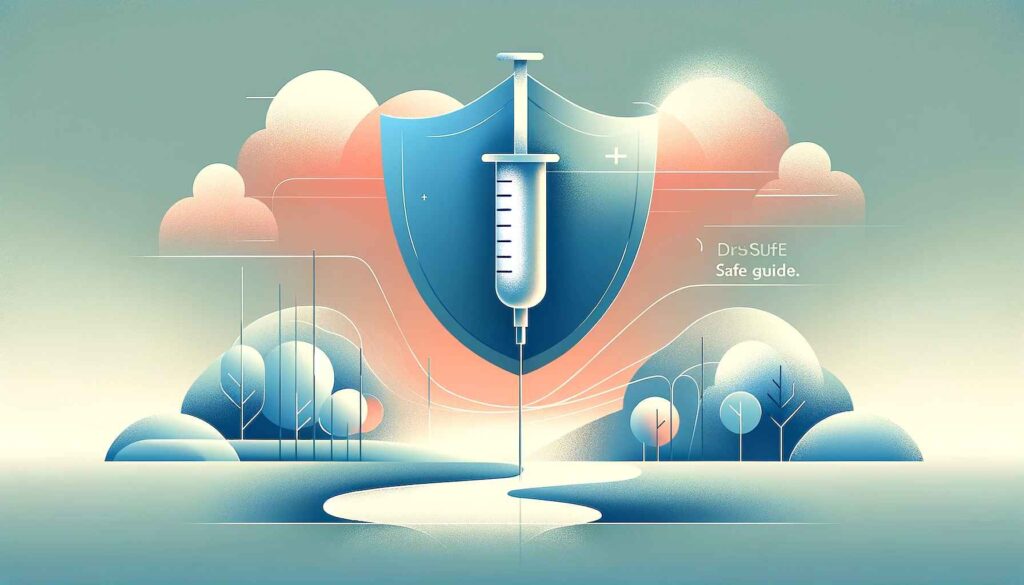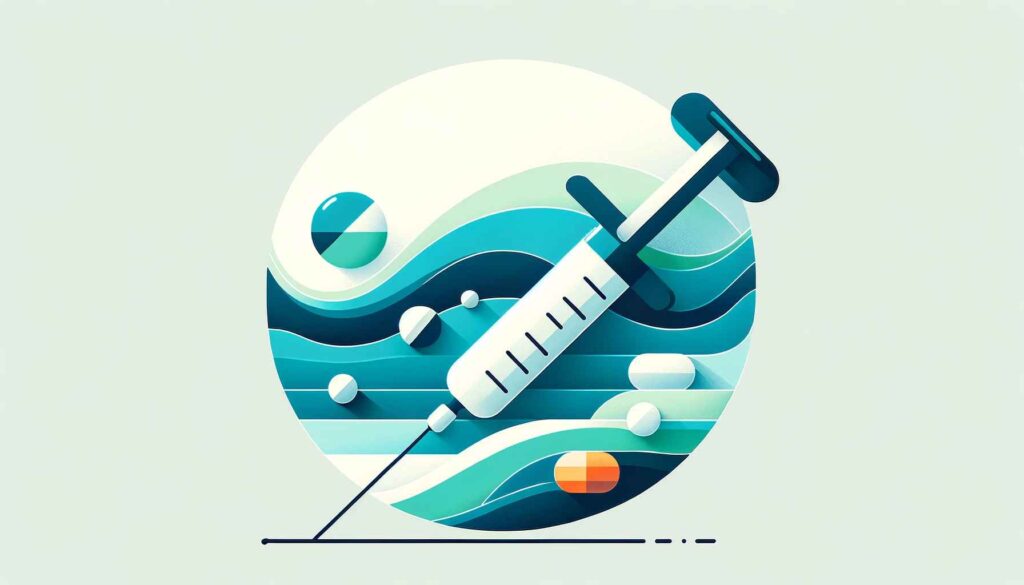In recent years, the practice of injecting tablet drugs, a method not originally intended for these substances, has seen an uptick. This shift can be attributed to a myriad of factors, including the pursuit of intensified effects, the unavailability of injectable forms, and economic considerations. This adaptation by users, while innovative, introduces a spectrum of health risks that cannot be overlooked. The tablets, designed for oral consumption, contain binders and fillers that are potentially harmful.
Recognizing these dangers, the conversation around safer injection practices becomes paramount. Harm reduction strategies, which seek to minimize the negative health outcomes associated with drug use, offer a pragmatic approach to dealing with the realities of tablet injection. These strategies do not endorse drug use; instead, they acknowledge the complexity of substance use and aim to support people in making safer choices within the context of their experiences.
Understanding the Risks of Tablet Injection

Injecting tablet medications, a practice far removed from their intended oral administration introduces a host of health risks that are critical for users to understand. This method of administration bypasses the body’s natural filters—such as the liver, which processes substances ingested orally—directly exposing the bloodstream and internal organs to the compounds within the tablets. The risks associated with this practice stem not only from the active drug substances but significantly from the non-active ingredients, known as excipients, which are not designed to be introduced directly into the bloodstream.
Vein Damage: One of the most immediate risks of injecting tablet medications is vein damage. Tablets contain binders and fillers that can cause blockages in small blood vessels, leading to vein scarring, collapse, and thrombosis. Repeated injections at the same site exacerbate this damage, potentially leading to chronic venous insufficiency.
Infection: The risk of infection is markedly increased with the injection of tablet medications. The use of non-sterile equipment, improper injection techniques, and the introduction of particulate matter into the body can lead to localized infections at the injection site, as well as more serious systemic infections, including sepsis. Additionally, the presence of bacteria in the mouth, which tablets are exposed to during oral administration, can be directly introduced into the bloodstream, increasing the risk of endocarditis, an infection of the heart valves.
Pulmonary Complications: Pulmonary complications arise from the particulate matter in tablets designed for oral use. When these particles are injected, they can travel to the lungs, becoming lodged in the pulmonary vasculature. This can lead to pulmonary embolism, a blockage of an artery in the lungs, and pulmonary granulomas, which are small nodules of inflammation. Over time, these complications can significantly impair lung function.
Preparation and Hygiene for Pills Injection

Adopting safer injection practices is crucial for minimizing the risks associated with injecting tablet medications. These practices revolve around meticulous preparation and hygiene to reduce the chances of infection, vein damage, and other complications. Here are detailed steps to follow for safer injection practices:
1. Hand Washing and Clean Surfaces
- Hand Washing: Begin by thoroughly washing your hands with soap and water for at least 20 seconds. This step is critical in removing bacteria and viruses that could be transferred during the injection process.
- Clean Surfaces: Use a clean, flat surface to prepare your medication. Wipe down the area with an alcohol swab or a disinfectant wipe to ensure it’s free from contaminants.
2. Sterile Equipment
- Sterile Water: Always use sterile water to dissolve the tablet. Tap water can contain bacteria and other microorganisms that pose serious health risks when injected.
- New Syringes and Needles: Use a new, sterile syringe and needle for each injection. Reusing syringes and needles not only increases the risk of infection but also leads to dull needles, which can cause more trauma to the veins.
- Alcohol Swabs: Clean the injection site on your skin with an alcohol swab before injecting. This step is crucial for removing bacteria from the skin’s surface and reducing the risk of infection.
3. Filtering the Solution
- Micron Filters: The gold standard for filtering solutions before injection is the use of a micron filter. These filters are designed to remove particulate matter, including the fillers and binders in tablet medications, significantly reducing the risk of vein damage and pulmonary complications.
- Alternative Methods: If micron filters are not available, cotton filters (e.g., a piece of clean cotton ball) or sterile medical gauze can be used as an alternative. While not as effective as micron filters, they can still help in removing larger particles. However, it’s important to note that these methods are less effective at filtering out bacteria and other microorganisms.
- It is important to note that filters will not reduce the amount of active substance or its effectiveness. They will only remove fillers and binders. The following table provides information on the average percentage of active ingredients present after hot and cold cooking morphine sulfate and hydromorphone hydrochloride. Each formulation was filtered using sterile cotton, Sterifilt 10mm (without cotton), and Sterifilt 15mm, and then washed and filtered again.

4. Dissolving the Tablet
- Crush the tablet into a fine powder using a clean, hard object. The finer the powder, the easier it will dissolve and the less likely it will cause blockages.
- Add the sterile water to the powder and mix until fully dissolved. Avoid shaking the mixture vigorously as this can create air bubbles.
5. Drawing Up the Solution
- Once the solution is prepared and filtered, draw it up into the syringe through the filter to ensure that any remaining particulate matter is removed.
- Before injecting, remove any air bubbles from the syringe by pointing the needle upwards and gently tapping the syringe, then slowly pressing the plunger until a small drop of solution appears at the tip of the needle.
Adhering to these steps for preparation and hygiene can substantially reduce the health risks associated with injecting tablet medications. While these practices do not eliminate all dangers, they are pivotal in harm reduction, aiming to protect health and prevent complications.
Choosing and Rotating Injection Sites

Choosing appropriate injection sites and rotating them regularly is a critical component of safer injection practices. This approach is designed to minimize the risk of damage and infection, ensuring that the veins and surrounding tissues remain as healthy as possible. Here’s a deeper dive into these practices:
Importance of Choosing Appropriate Injection Sites
- Minimize Damage: Some areas of the body have veins that are more robust and better suited to withstand the effects of repeated injections. Choosing these sites can help minimize vein damage and scarring.
- Reduce Infection Risk: Certain areas are less prone to infection due to better blood circulation and lower bacteria levels. Injecting into these sites can reduce the likelihood of complications arising from infections.
- Avoid Sensitive Areas: It’s crucial to avoid areas near arteries, nerves, and bones. Injecting into or near these structures can lead to serious complications, including arterial damage, nerve injury, and even more severe infections like osteomyelitis (bone infection).
Advice on Rotating Injection Sites
- Rotate Regularly: To prevent overusing a single site, rotate your injection sites with each use. This practice gives previously used sites time to heal and reduces the risk of developing abscesses, scars, and collapsed veins.
- Use Both Sides of the Body: Make use of all available and suitable sites on both sides of your body. This can further distribute the impact of injections and reduce localized damage.
- Keep Track: It can be helpful to keep a mental or physical note of which sites you’ve used recently to ensure you’re rotating effectively. This can be particularly useful for individuals who inject frequently.
- Be Informed About Safe Sites: Commonly recommended sites for intravenous injection include the veins in the arms (e.g., the crook of the arm), as these are relatively robust and easy to access. However, even within these areas, it’s crucial to rotate sites. Avoid using sites that are already showing signs of damage or infection.
Additional Considerations
- Inspect Injection Sites: Before choosing a site, inspect it for signs of damage, infection, or irritation. If a site looks compromised, it’s important to choose a different location.
- Use Proper Technique: Alongside site rotation, employing proper injection techniques can further reduce the risk of complications. This includes using a new, sterile needle for each injection, injecting at the correct angle, and avoiding repeated poking in the same area.
- Seek Medical Advice: If you notice signs of infection, vein damage, or other complications, it’s important to seek medical advice promptly. Early intervention can prevent more serious health issues.
Dealing with Pill Injection Complications

Dealing with complications arising from injecting tablet medications requires vigilance and prompt action. Recognizing early signs of infection, abscesses, and vascular damage is crucial for preventing more serious health issues. Here’s a guide to understanding these complications and knowing when to seek medical help.
Recognizing Signs of Injection-Related Complications
- Infections: Signs of an infection at the injection site or in the body may include redness, warmth, swelling, pain, and pus or discharge. Fever, chills, and a general feeling of being unwell can indicate a systemic infection.
- Abscesses: An abscess is a localized collection of pus caused by an infection. Symptoms include a swollen, painful lump under the skin, redness, and warmth. Abscesses can become very serious if not treated, potentially leading to systemic infections.
- Vascular Damage: Symptoms of vein damage include persistent pain, swelling, changes in skin color (darkening or reddening), and the development of varicose veins. Thrombosis (blood clots) may manifest as a hard, painful lump under the skin, often accompanied by redness and swelling.
When and How to Seek Medical Attention
- Immediate Attention for Infections and Abscesses: If you notice signs of infection or an abscess, especially if you have a fever or feel unwell, seek medical attention as soon as possible. Infections can rapidly progress and lead to severe complications, including sepsis, a life-threatening response to infection.
- Consult Healthcare Providers for Vascular Damage: Persistent pain, swelling, or changes in vein appearance should prompt a visit to a healthcare provider. Early intervention can prevent long-term damage and complications such as deep vein thrombosis (DVT).
- Emergency Services for Severe Symptoms: Symptoms such as difficulty breathing, chest pain, severe swelling, or loss of consciousness require immediate emergency medical attention. These could indicate life-threatening conditions like pulmonary embolism or severe systemic infection.
Guidance on Seeking Medical Help
- Be Honest: When seeking medical help, it’s important to be honest with healthcare providers about your drug use and the method of administration. This information is crucial for accurate diagnosis and treatment.
- Use Harm Reduction Services: Many areas offer harm reduction services that can provide advice, support, and referrals to healthcare providers familiar with and sympathetic to the needs of people who inject drugs.
- Know Your Rights: Familiarize yourself with your rights to healthcare and confidentiality. Healthcare providers are there to help, not to judge or report your drug use to law enforcement.
Preventing Complications
- Adopt safer injection practices, including using sterile equipment, proper preparation and hygiene, and rotating injection sites.
- Consider accessing support services for substance use, which may offer additional resources for managing or overcoming drug dependence.
Recognizing and acting on the early signs of injection-related complications can significantly reduce the risk of severe outcomes. Engaging with healthcare services, even in the context of drug use, is a critical step in safeguarding your health.
Accessing Clean Supplies and Support

Accessing clean supplies and leveraging support networks are foundational pillars in the harm reduction approach to safer injection practices. These resources not only help in reducing the immediate risks associated with injecting drugs but also provide pathways to longer-term health and recovery options. Here’s how individuals can navigate these resources:
Accessing Clean Supplies
- Needle Exchange Programs: These programs provide free access to sterile needles and syringes and offer safe disposal options for used injecting equipment. Many needle exchange services also supply other harm-reduction materials, such as alcohol swabs, sterile water, and filters. To find a local needle exchange program, individuals can search online, contact local health departments, or ask for recommendations from harm reduction organizations.
- Safe Injection Sites: Where legal and available, supervised injection facilities (SIFs) or safe injection sites offer a hygienic environment in which individuals can use drugs under the supervision of trained staff. These facilities are equipped to respond to overdoses and provide various health-related services, including wound care, testing for infectious diseases, and referrals to medical and social services. Information about locations and services can typically be found through public health departments or harm reduction networks.
- Pharmacies: Some regions allow pharmacies to sell or distribute sterile injecting equipment. This can be a reliable source for clean supplies, although availability and regulations vary by location.
Building a Support Network
- Healthcare Providers: Establishing a relationship with a healthcare provider who is knowledgeable about or specializes in addiction and harm reduction can be invaluable. These professionals can offer medical advice, wound care, vaccinations (e.g., for hepatitis B and tetanus), and referrals to specialized services such as addiction treatment programs.
- Harm Reduction Services: Many communities have organizations that provide harm reduction services, including education, supplies for safer drug use, and support for individuals affected by drug use. These organizations often serve as a gateway to additional resources, including housing, legal aid, and employment services.
- Peer Support Groups: Groups such as Narcotics Anonymous (NA) or other recovery-oriented communities can offer emotional support and practical advice from individuals with lived experience. While NA and similar groups typically advocate for abstinence, there are also harm reduction-based support groups that focus on safer use and gradual reduction.
- Online Resources and Forums: Digital platforms can provide access to a broad community of support, including forums where individuals share experiences, advice, and support related to safer injection practices and navigating addiction.
Encouragement for Seeking Support
Encouraging individuals to tap into these resources and build a support network is crucial. It’s important to communicate that seeking help and utilizing harm reduction services is a sign of strength, not weakness. These resources can provide the tools and support necessary for safer injection practices and offer pathways toward health improvement, recovery, and a better quality of life. Engaging with these services can also reduce the stigma around drug use, fostering a more supportive and understanding community environment.
Legal and Ethical Considerations

Navigating the legal and ethical landscape surrounding the injection of tablet drugs is complex, as laws and regulations vary significantly across different jurisdictions. Understanding these legal implications is crucial for individuals who inject drugs, as well as for healthcare providers and harm reduction advocates who support them.
Legal Implications
- Controlled Substances: In many regions, the possession and use of certain medications without a prescription, especially controlled substances, are illegal. This includes medications that are commonly injected.
- Paraphernalia Laws: Laws regarding the possession of drug paraphernalia, which can include syringes and other injection equipment, also vary. In some places, needle exchange programs operate under exemptions to these laws, while in others, possessing syringes without a prescription can lead to legal consequences.
- Safe Injection Sites: Where available, safe injection sites operate under legal frameworks that protect users and staff from prosecution for drug possession within the facility. However, the legal status of these sites varies, with some countries or regions embracing them and others prohibiting their operation.
Ethical Considerations
- Stigma and Discrimination: Individuals who inject drugs often face significant stigma and discrimination, not only from society at large but sometimes from within the healthcare system itself. Ethical considerations demand that all individuals, regardless of their drug use status, are treated with dignity, respect, and without judgment.
- Confidentiality: Healthcare providers must navigate the confidentiality of their patients who use drugs, balancing legal reporting requirements with the need to maintain trust and provide care effectively.
Encouragement for Legal Awareness
- Stay Informed: Encourage readers to become familiar with their local laws regarding drug possession, use, and paraphernalia. Knowing the legal landscape can help in making informed decisions and understanding the risks involved.
- Seek Support: For those facing legal issues or uncertainty, seeking advice from legal professionals who understand or specialize in drug law can be beneficial. Some harm reduction organizations offer legal resources or can refer to sympathetic legal support.
- Advocacy and Change: Engaging in or supporting advocacy efforts to change laws that negatively affect people who use drugs can contribute to a safer and more equitable society. This includes supporting harm reduction policies, establishing safe injection sites, and the reform of laws that criminalize drug use.
Conclusion

In wrapping up our discussion on safer tablet injection practices, it’s imperative to underscore the essence of harm reduction. This approach, grounded in realism and compassion, aims to mitigate the health risks for those who inject tablet medications. It acknowledges the complexities of substance use and seeks to empower individuals with knowledge and resources to make safer choices.
The stark reality is that injecting tablets not intended for intravenous use carries inherent risks. However, by adopting harm reduction strategies and adhering to safer injection practices, the potential for harm can be significantly diminished. These practices include using sterile equipment, selecting appropriate injection sites, rotating these sites to prevent vein damage, and being vigilant for signs of complications to seek timely medical intervention.
While these measures can reduce the risk, the most effective way to safeguard one’s health is to avoid injecting tablets altogether. I recognize this may not be immediately feasible for everyone, which is why harm reduction is so vital. It provides a bridge to safer practices and opens the door to further support and treatment options.
For those grappling with drug dependency or addiction, remember that help is available. Numerous treatment modalities respect individual autonomy and are tailored to support recovery at every stage. Seeking professional help can be a pivotal first step toward reclaiming your health and well-being. Treatment options range from medical intervention and counseling to support groups and rehabilitation programs, all designed with the goal of sustainable recovery in mind.
As I conclude, I encourage you to reflect on the importance of harm reduction, not only as a set of practices but as a philosophy that values human dignity and health. If you or someone you know is injecting tablet medications, consider exploring the available resources and support networks. Together, we can work towards a safer, healthier future for all people impacted by substance use.




